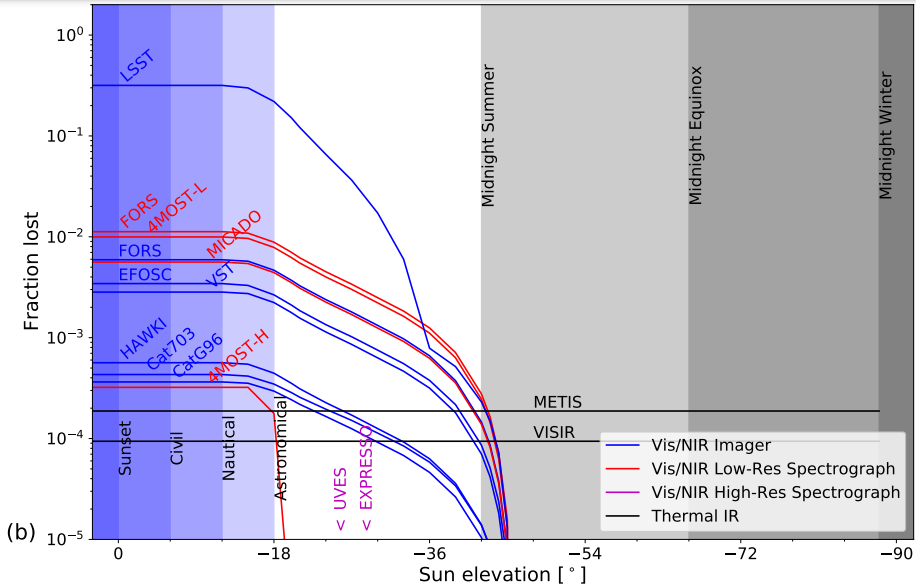A strong concern is raising among the astronomical community as the number of satellites in
Low Earth Orbit (LEO) is exponentially increasing. During an exposure, the scattered light from a satellite can form a trail on the images taken by a telescope instrument, which can lead to a loss of data on the observed field. In extreme cases, if the magnitude of the satellite is very bright and saturates the detector, it can even cause a complete loss of the observation. Satellite trails can be particularly problematic for observations that require a long exposure time, as the trail can span a significant portion of the image. They can also be more noticeable in observations of faint objects, as the trail may be brighter than the object itself 1.

As the aggregated effect of a high number of satellites on astronomical observations can be directly observed in visible light, it also has a significant impact on other frequency domains, and especially on the field of radio astronomy. Whereas existing regulations provide radio quiet zones on earth for radio astronomers to conduct science without being impacted by radio frequency interferences, these regulations are irrelevant for space applications. The aggregated effect of the communication signals emitted by ten-thousands of operating satellites in the coming years is raising concern among the radio astronomy community, as existing telescopes as well as multi-billion telescope projects such as the so-called SKAO (Square Kilometer Array Observatory) could be heavily impacted 2.

The goal of this project is to design a new model for assessing the impact of satellites on the
quality of scientific optical and radio observations, with the ultimate aim of implementing these models in the Space Sustainability Rating system. This system is intended to help space actors design and implement sustainable and responsible space missions.
As of now, the module is divided in two parts, namely
- (Dark skies (optical), which will be based on different subcomponents allowing to compute the apparent and effective magnitude in order to both incentivize fainter designs and account for the aggregated effect of the mission on observations, as well as a questionnaire allowing to account for other aspects such as flare mitigation or data sharing with astronomers.
- Quiet Skies (radio), which will account for the level of compliance with existing regulations towards Radio Interference Mitigations with radio quiet zones and radio telescopes in general. The team is also exploring a model to compute the data loss due to the mission architecture and communication strategy on different radio telescopes.
Efforts towards the implementation of the Dark and Quiet Skies module will continue in 2023, with the goal to release first findings in an academic paper.